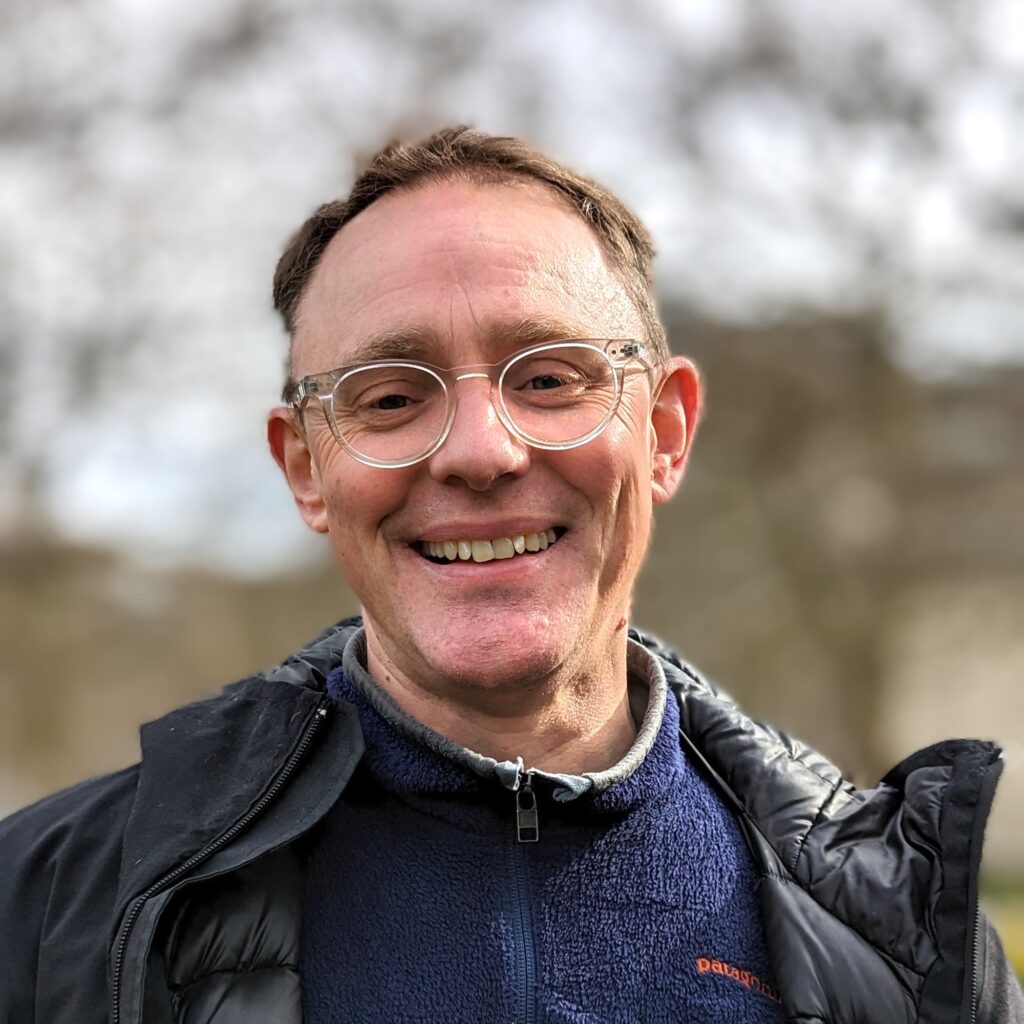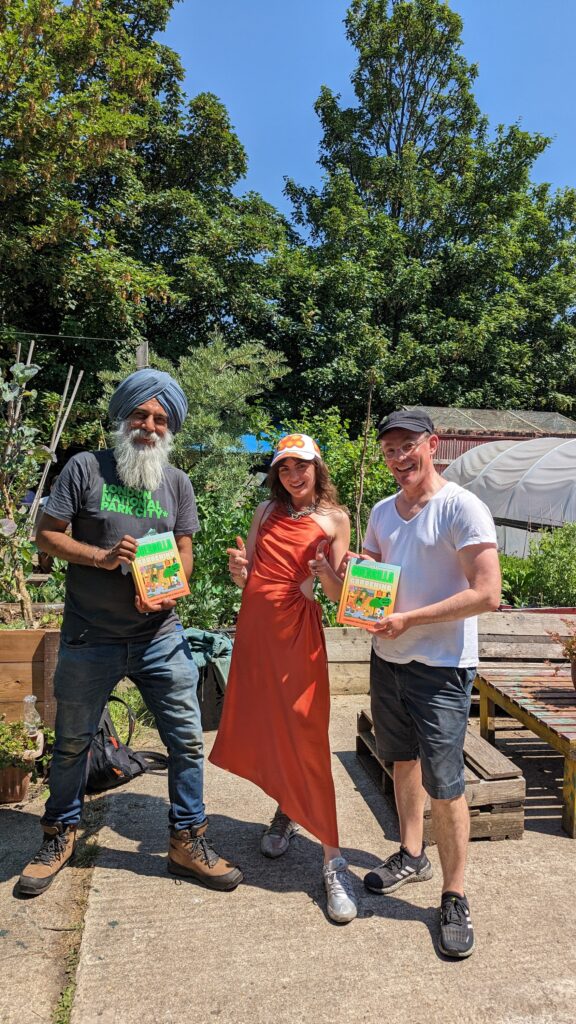
Every year, the Van der Leeuwkring and AIR join forces to invite a Guest Urban Critic at the Stadmakerscongres. This years guest is Mark Cridge, executive director of National Park City London Foundation.
The Guest Critic’s role is to share insights and inspire Rotterdam’s citymakers. Two weeks before the congress, I interview Cridge on a Friday afternoon though a video connection. He’s passionate about reinventing democratic processes in the city, and at the same time rethinking the concept of a city altogether:”When you say London, people think: red double-decker buses and the Big Ben. But when you consider all of the green spaces, parks, front gardens and rivers almost exactly half of the city is green or blue.”
Introduction
Q: Who is Mark Cridge?
“I studied architecture in the nineties, when the discipline was most concerned with creating perfect pristine objects with no people in them. It seemed architecture didn’t take any social issues into account. After studying I got involved in the digital communications industry and also became increasingly concerned with the climate and biodiversity crisis. The marketing and advertising industry wasn’t at all concerned with climate at that time. I started to become more interested in inspiring and moving people to take action together. So much of that, now comes together in my role in the National Park City-movement, where I started as executive director of National Park City London Foundation about a year and a half ago.”
National Park City
Q: London is the first city in the world to achieve the status of National Park City. Adelaide, in Australia, became the second. What does it entail?
“National Parks are protected areas, where organisations work together in partnerships actively to allow people to enjoy the place. The concept exists for over 100 years. More recently, we’re starting to learn that cities can be also be extremely biodiverse, but urban areas weren’t recognised as potential National Parks. Until Dan Raven-Ellison, a former geography teacher, started a campaign to make London the world’s first National Park City. He asked the simple question: What if we take the concept of a National Park to a city? How might that allow us to reconnect to nature?”
Q: What kind of story does National Park London tell?
“For me, it’s all about reconnecting to nature. Rapid urbanisation will continue, making our relation with nature really problematic. The concept of the National Park City is to create direct health and well-being benefits. It’s the beginning of conversations like: how do we grow our food? How do we travel around? How might we think different about building, or retrofitting existing buildings?
The Greater London Area is greener than most people might think; 49% of the space is green or blue. There are 8.4 million trees, that’s about one tree for every inhabitant. Together with Urban Good we produced a Green Map of London. It’s not unlike a traditional type of map, but we knocked out all the roads and houses in order to be able to see the city differently.
I think, however, that getting people together is the most important task. We’ve recruited about 160 volunteers we call ‘rangers’. They’re running all sorts of activities like nature walks and forest-bathing. At London National Park City we’re relentlessly positive in promoting ways in which the city could move forward.”

Learnings from London
Q: Rotterdam is one of the next five cities in the world that have been nominated to achieve the status. What can Rotterdam learn from London?
“I’m really excited to come to Rotterdam. Why? I really enjoy helping other cities to take over the idea. From the outside I see a city that’s international, diverse and capable of changing. But I don’t have all the answers. We need different cities to provide inspiration and I think cities in the Netherlands are going to take the idea of the National Park City and do amazing things with it. Besides Rotterdam, Breda has also been nominated. There’s a more human approach to city planning in Netherlands. The openness that cities in the Netherlands have, is great.”
Q: In Rotterdam there’s enormous pressure to build new and more affordable homes. In a recent press release the city announced that, in order to create space for new homes, garden allotments need to moved and sized down. Is the city doing the right thing, by replacing recreational space with homes?
“That’s really difficult, isn’t it. It’s the core of the issue. It’s naive to think you can freeze all development, there’s always going to be a trade-off between nature and construction. I would like to make two comments: the first is, when there are difficult trade-offs to be made, use participatory methods in a very early stage. The second is: introduce legislation to not only protect, but enhance biodiversity.
I believe we need to move beyond binary trade-offs. In the UK, there are advanced plans to introduce a biodiversity ‘net-gain’. That means that any new development should result in an increase of 10%-20% in biodiversity. The gain can be realised on-site as well as off-site, I think the latter is most likely in many cases [off-site biodiversity gain means that a building developer must compensate for a loss in biodiversity on their building site, by creating more biodiversity elsewhere in the city, red.].
There’s no future for our cities if we don’t fully incorporate nature and community benefits in developments. This is beginning to take shape on a community level: the neighbourhood is the unit of change. It’s all about the people you know that live around you. Therefore, one of the things we’re looking at is what it means on a neighbourhood setting to have more agency or involvement.
There are many great examples of this, like in the London borough of Islington, where residents mapped about 400 to 600 dead-end roads or cul-de-sacs that could potentially be made into small green spaces for the neighbourhood. The strategy is to first create temporary pocket parks and slowly allow them to evolve.”

Q: You’re trained as an architect. Are architects and urban planners equipped to engage with citizens in their day-to-day work?
“The most interesting thing for me about architecture is the context into which you’re making those design decisions. Currently, I think everyone working in architecture and city planning is fully aware of its impact. But are architects now being trained in designing our cities through a more participatory approach, addressing and supporting the interests of communities? Creating responsive cities that are ready for heavy changes requires new skill sets and bringing in nature-based solutions. The good thing is that biodiversity issues have also attracted interest from building companies and real estate investors.”
Q: How about disadvantaged citizens, who are generally underrepresented compared to the middle class?
“It starts by looking at the community as a repository for real wealth than as a problem that needs to be solved. When decisions are taken together with people instead of over their heads, people are much more likely to be represented by these decisions. When you start to believe in what’s already there then you start to discover what’s needed to build social capital and get more people involved. It’s a bit like the American speculative fiction author William Gibson put it: ‘The future is already here, it’s just not evenly distributed.'”
Guest Urban Critic
The Keynote lecture by Guest Urban Critic Mark Cridge at the Stadmakerscongres 2023 will start at 4.30 PM at the Grote Zaal, Theater Rotterdam.